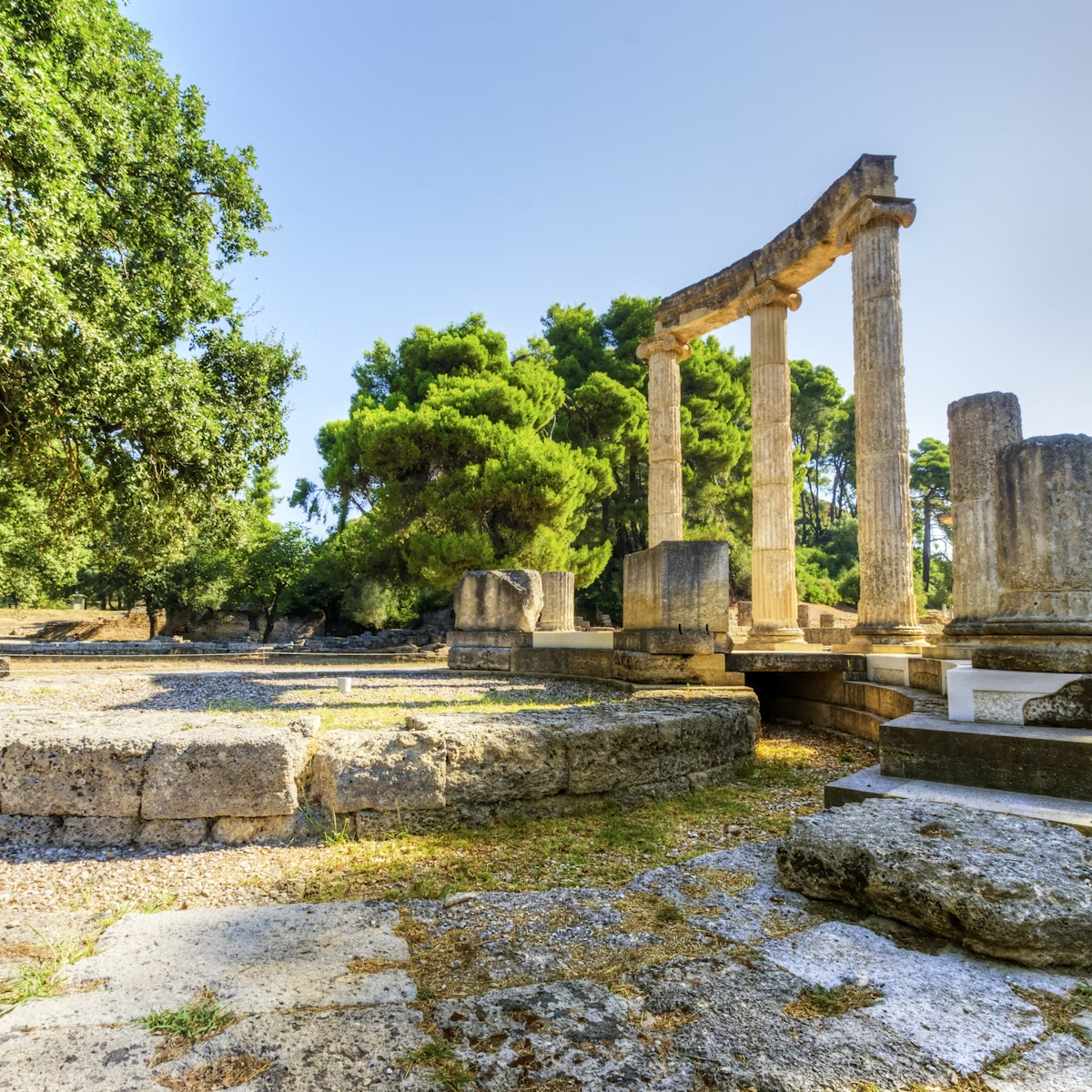This superb museum features finds from the adjacent archaeological site of Olympia. Visiting it in conjunction with the ruins helps to put the ancient site into perspective. The museum's exhibits span the Olympic sanctuary's past, from the prehistoric to the Roman periods. Artefacts include increasingly sophisticated ceramics, votive offerings to Zeus and Hera, sacrificial cauldron adornments and statuary from the Temple of Hera.
The main hall dramatically displays the biggest highlight: reassembled pediments and metopes from the Temple of Zeus.
The quality of finds is remarkable, with far more bronze artefacts recovered than at other ancient sites. Numerous votive offerings – ceramic and bronze animals, cauldrons, statues – display remarkable craftsmanship, while the terracotta decoration that survives from the various treasury buildings is a reminder that most of the buildings would have been quite brightly coloured.
The eastern pediment of the Temple of Zeus depicts the chariot race between Pelops and Oinomaos, while the western pediment shows the fight between the centaurs and Lapiths at the wedding feast of Pirithous (the centaurs got drunk and tried to abduct the women; the story can be seen as an allegory for Classical Greek values and victories over 'barbarians'). The metopes depict the Twelve Labours of Hercules; half the fun is trying to work out which is which from the remains alone.
Another highlight, in a room of its own, is the majestic 4th-century Parian marble statue of Hermes carrying baby Dionysus, carved by Praxiteles. The imposing Nike by Paionios (around 420 BC) is another stunner.
Information panels are in Greek, English, French and German.





